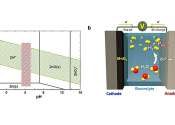Renewable energy storage possible thanks to chemical conversions
An unexpected discovery has led to a rechargeable battery that's as inexpensive as conventional car batteries, but has a much higher energy density. The new battery could become a cost-effective, environmentally friendly ...
Apr 18, 2016
3
1389








